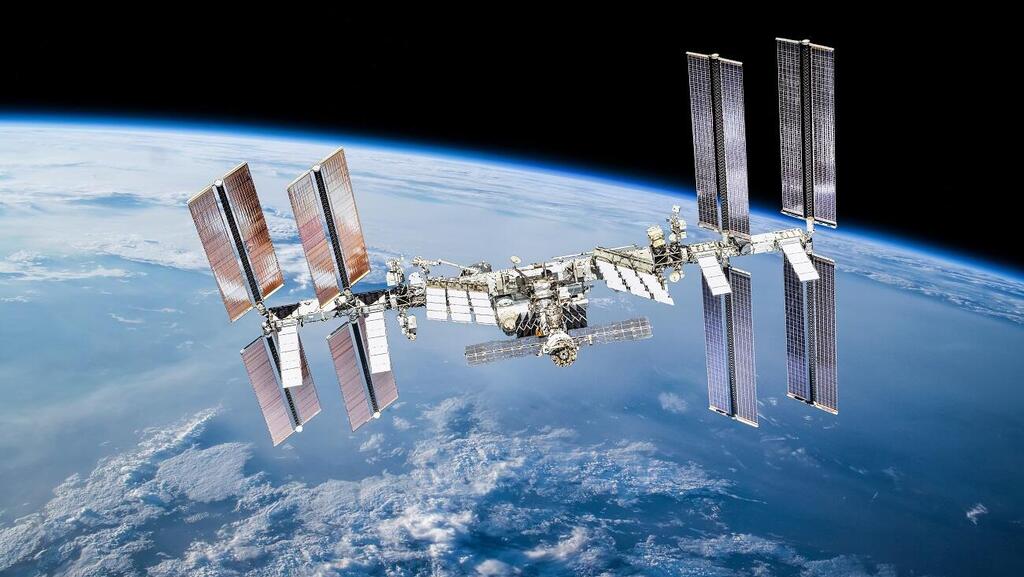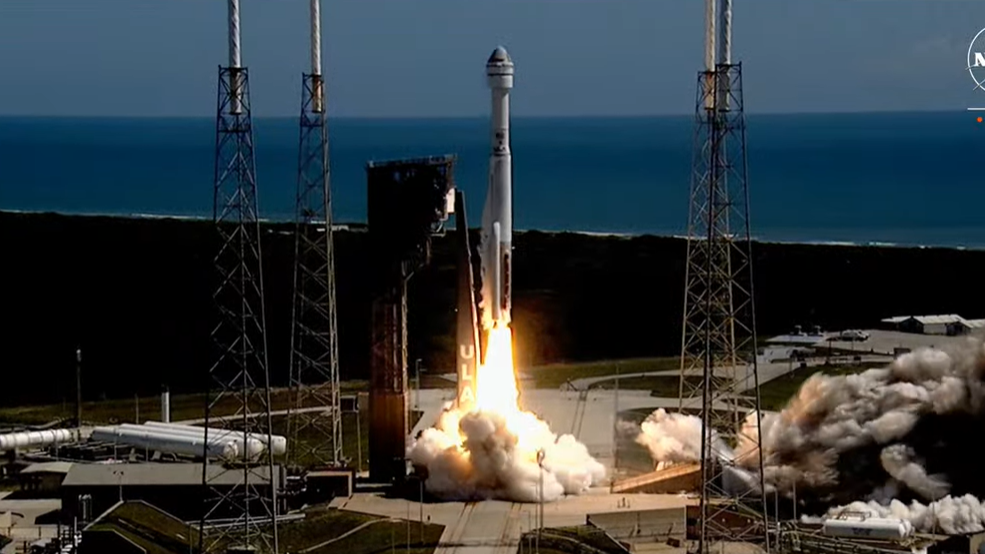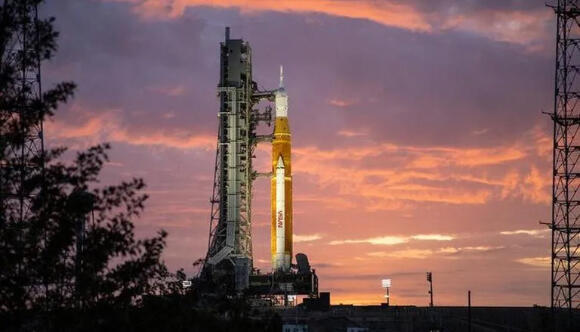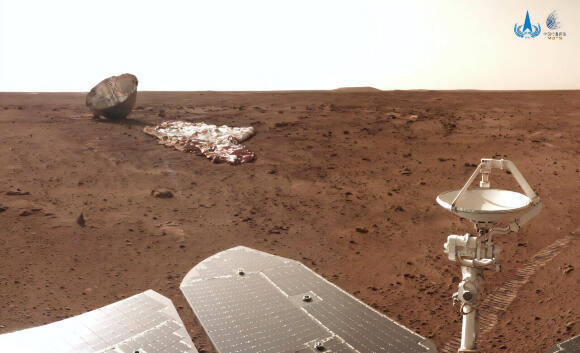ISS - The leaks and the disagreements
The International Space Station (ISS) is showing its age, and tensions are rising between the United States and Russia over the severity of an air leak in the station's Russian segment and the potential threat it poses.
The leaks were first detected in 2019 in a vestibule of the Zvezda ISS Service Module, called PrK, which houses the docking port used by the Progress cargo spacecraft for attachment. To address the issue, crew members keep the hatch to the port closed unless access to the docked spacecraft is necessary, in order to minimize air loss.
Already upon discovery, disagreements sparked between NASA and Roscosmos, the respective space agencies of the U.S. and Russia, regarding the cause of the leak. Roscosmos attributes the cracks to material fatigue caused by microscopic vibrations of the station.
NASA, on the other hand, suggests a combination of factors, including internal air pressure, mechanical stress on the docking port, exposure to space, and more. The dispute over the root cause has delayed efforts to resolve the issue, while the leaks have worsened. The two agencies also disagree on the severity of the problem.
In a NASA update released approximately seven weeks ago, the agency reported that the air leak had reached a rate of 1.7 kilograms of air per day. Partial sealing efforts have reduced the air loss by about one-third.
The central question is whether the cracks threaten the station's continued operation and could lead to its structural failure. Here, too, opinions diverge.
“While the Russian team continues to search for and seal the leaks, it does not believe catastrophic disintegration of the PrK is realistic, NASA has expressed concerns about the structural integrity of the PrK and the possibility of a catastrophic failure.” said former NASA Associate Administrator and retired NASA Astronaut Bob Cabana, now chair of NASA’s ISS Advisory Committee, during a committee meeting.
“The Russians believe that continued operations are safe but they can’t prove to our satisfaction that they are, and the U.S. believes that it’s not safe but we can’t prove to the Russians’ satisfaction that that’s the case,” Cabana added.
Cabana noted that representatives of both agencies made a joint recommendation to their agencies’ leaders to continue to seek a common understanding of the vestibule’s condition. If necessary, the examination will include experts from industry and academia.
However, no firm timeline for decision-making has been set. Cabana also mentioned that NASA has commissioned an external review. “This is an engineering problem, and good engineers should be able to reach a solution and agree on it,” he concluded.
Aiming to repeat the feat
SpaceX has announced that the sixth test flight of the Starship system is targeted to launch on Tuesday, November 19. The launch window will open at 10:00 pm UTC. This test will largely reiterate the fifth test, conducted in October, during which the Super Heavy booster successfully returned to the launch site and was caught as planned by the specialized chopstick arms of the launch and catch tower.
The spacecraft itself, Starship, will fly into space without entering orbit around Earth, re-enter the atmosphere over the Indian Ocean, perform a landing maneuver above the water, and ultimately fall into the sea without completing a full landing.
The main innovation in this test is SpaceX's attempt to ignite one of the spacecraft’s engines in space This is a crucial operation step for future missions, as it will enable the spacecraft to enter orbit, return to Earth, or continue to destinations like the Moon and beyond.
Additionally, engine ignition in space is essential for performing orbital corrections or refueling. The launch time was selected to ensure daylight at the partial landing site in the Indian Ocean, allowing for better documentation of the maneuver compared to the previous test, during which the landing occurred in darkness.
SpcaeX's previous test
(Video: Reuters / SpaceX)
Starship is the largest launch system ever constructed, with the rocket and spacecraft combined standing 121 meters tall. Both components are made of stainless steel, with the aim of making them fully and rapidly reusable.
NASA has selected the Starship spacecraft as the landing vehicle for the initial missions of its Artemis program, which aim to return humans to the Moon. Beyond lunar exploration, SpaceX envisions ambitious roles for Starship, from revolutionizing the satellite and space communications market to laying the groundwork for a human presence on Mars.
NASA's troubles
While SpaceX advances its Starship program, storm clouds are gathering over NASA's flagship launch vehicle, the Space Launch System (SLS). Developed at enormous cost, the rocket has launched only once to date, carrying the uncrewed Orion spacecraft on the inaugural mission of the Artemis program. Although the launch was successful, it followed a prolonged series of delays due to technical issues.
Already at the time, the SLS has faced significant criticism for being outdated, incorporating components from the Space Shuttle program, and for being a single-use rocket rather than reusable. Despite this, NASA insisted on developing the rocket and basing its lunar missions on the Orion spacecraft, which means the use of Starship as a lunar lander will require an interface to transfer astronauts and equipment between the spacecraft. In the future, such operations are expected to rely on a lunar orbital station, but that station is not expected to become operational before the first crewed missions.
Veteran space journalist Eric Berger now reports that there is a significant chance NASA could cancel the SLS program. "To be clear we are *far* from anything being settled, but based on what I'm hearing it seems at least 50-50 that NASA's Space Launch System rocket will be canceled. Not Block 1B. Not Block 2. All of it. There are other ways to get Orion to the Moon," Berger tweeted.
In another tweet, Berger cited SpaceX’s Falcon Heavy as a potential alternative. Another option, not mentioned by him, is using Starship for the entire process, thereby bypassing Orion altogether. Both alternatives involve using private spacecraft rather than NASA’s own systems.
This scenario is not far-fetched, given that SpaceX’s CEO and founder, Elon Musk, was a strong supporter of the U.S. President-elect Donald Trump during his campaign and has already received a promise to lead an external office aimed at improving government efficiency. Such reform could very well include canceling NASA’s expensive programs and transferring them to private hands—possibly Musk’s own.
On another front, NASA’s Jet Propulsion Laboratory (JPL) in California has announced plans to lay off approximately 325 employees this week, representing about 5% of its workforce, due to budget cuts. JPL Director Laurie Leshin wrote in a memo to employees that reductions in the fiscal year 2025 budget, combined with expected expenditures, made workforce reductions unavoidable.
JPL had already laid off 530 employees at the beginning of 2024, primarily in response to the cancellation of the Mars Sample Return program. The lab has also scaled back work with external contractors. Thus, it’s likely this won’t be the last round of budget cuts NASA faces in the near future. Whether research projects will also be affected remains an open question.
Sitting on the shore of Mars
Extensive evidence suggests that Mars was once a wet planet with oceans, rivers, and rainfall before losing its atmosphere and most of its water to space. Now, data collected by the Chinese Mars rover Zhurong strengthens this hypothesis, revealing findings that may indicate the location of the shoreline of one of these ancient water bodies.
The Zhurong rover landed in Utopia Planitia on Mars in 2021, becoming the sixth wheeled rover to operate on the Red Planet and the first from a non-American space agency. It functioned for nearly one Earth year, covering approximately two kilometers, before ceasing operation.
Researchers from The Hong Kong Polytechnic University (PolyU), in a new study, cross-referenced images captured by Zhurong with data from its ground-penetrating radar, as well as images and measurements from Mars-orbiting satellites.
They concluded that 3.7 billion years ago, this region likely hosted the shoreline of an ancient ocean. According to their findings, layers of sediment typical of aquatic environments, such as silica, formed in the area. The researchers identified three distinct zones that comprised the shoreline: a transition zone between land and sea, a shallow marine environment, and a deeper marine environment.
Shortly thereafter, the ocean appears to have frozen for a geologically brief period—between 10,000 and 100,000 years—a process that helped preserve the sediment layers. Around 260 million years later, the ocean dried up completely, likely due to the loss of the planet’s atmosphere.
“The findings not only provide further evidence to support the theory of a Martian ocean but also present, for the first time, a discussion on its probable evolutionary scenario," said lead researcher Bo Wu. However, other scientists argue that erosion over the vast time since then would have destroyed shoreline patterns, meaning the features identified by the team may not represent a coastline. Wu himself admitted that the team does “not claim that our findings definitively prove that there was an ocean on Mars."
The mysteries surrounding Mars’s geological history may only be partially resolved when samples from the Red Planet are brought back to Earth for study. NASA has canceled its mission to retrieve samples collected by the Perseverance rover and is now seeking private companies to carry out the project at a more reasonable cost. Meanwhile, China has announced its own Mars sample return mission, scheduled for launch in either 2028 or 2030.
Captured on a rare day
For years, Uranus was believed to have a highly unusual and enigmatic magnetic field. Measurements indicated that it lacked the charged particles scientists expected to find, was unusually close to the planet, and tilted at an odd angle. Numerous theories were developed to explain this peculiarity, but a new study offers an alternative explanation: the measurements may not accurately reflect the planet’s typical magnetic field.
6 View gallery


A rare event. Solar wind blew Uranus’s plasma away, altering the shape of its magnetosphere. The planet’s usual state (left) compared to the altered state during the solar storm observed by Voyager during its 1986 Uranus flyby
(Illustration: NASA/JPL-Caltech)
Get the Ynetnews app on your smartphone: Google Play: https://bit.ly/4eJ37pE | Apple App Store: https://bit.ly/3ZL7iNv
Much of our understanding of Uranus comes from the only spacecraft to observe it up close, Voyager 2, which passed by the planet in 1986. Researchers re-examining its data suggest that on the very day of the flyby, Uranus was struck by a strong solar storm. The storm’s radiation may have ejected particles from the planet's magnetic field, compressed it, and distorted its shape.
“The spacecraft saw Uranus in conditions that only occur about 4% of the time,” said lead researcher Jamie Jasinski of NASA’s Jet Propulsion Laboratory (JPL). “If Voyager 2 had arrived just a few days earlier, it would have observed a completely different magnetosphere at Uranus.”








